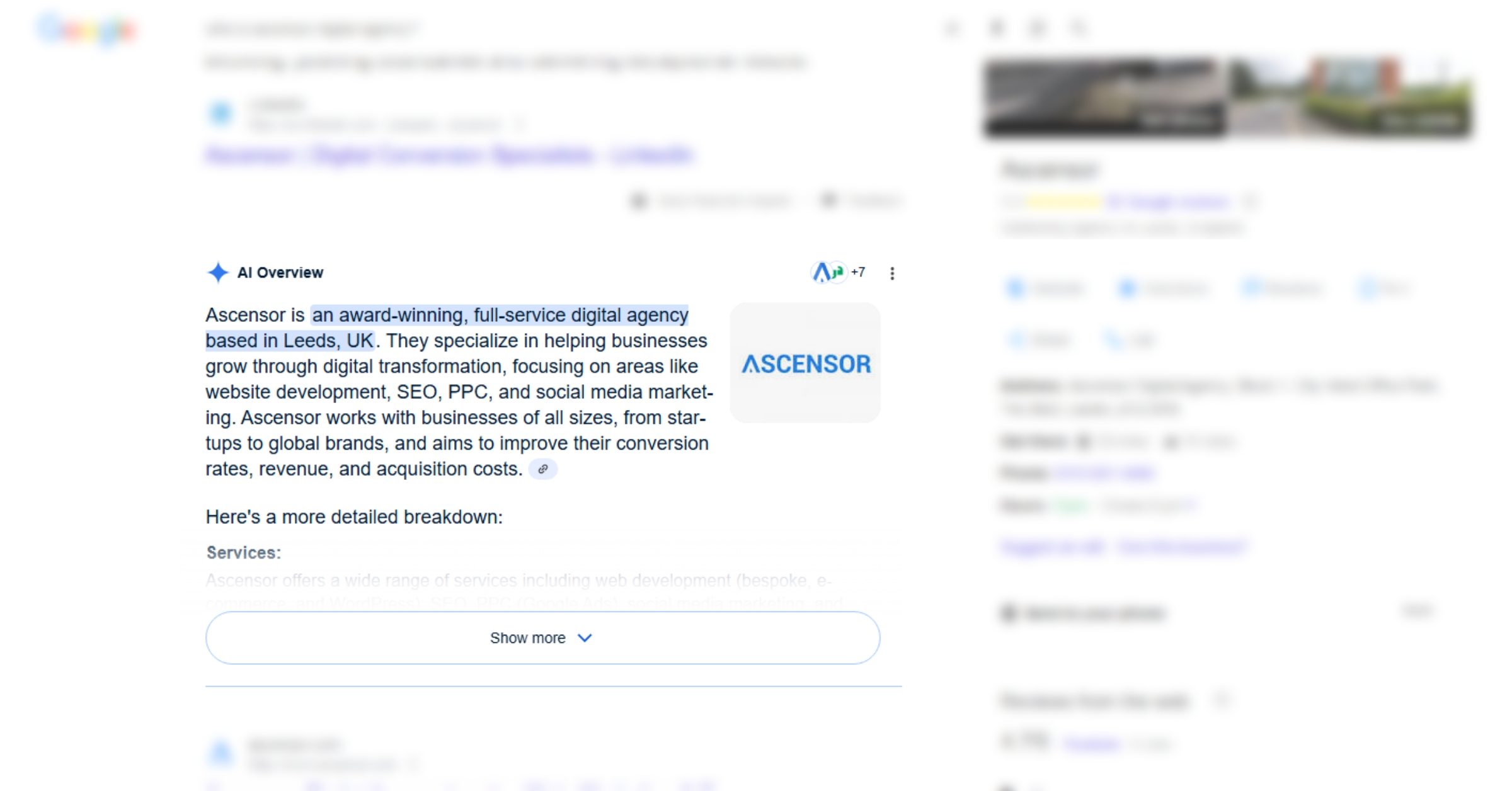The future of search has officially arrived, and it’s conversational…
Google’s Search Generative Experience (SGE) is no longer an experiment. With its widespread rollout in 2025, SEO professionals and marketers are scrambling to understand how it affects visibility, traffic and trust.
If you’re relying on traditional keyword ranking and link-building strategies, it’s time to adapt.
So we’re going to break down what SGE is, how it works and what your business should be doing to stay visible in AI-powered search results.
What is Google’s SGE?
SGE is Google’s integration of generative AI directly into search results. Instead of just showing 10 blue links on a results page, Google now presents AI-generated summaries at the top of the page for many queries, often answering the user's question before they even click.
These summaries:
- Pull content from multiple sources (not always the top-ranking ones)
- Feature linked citations to the sources used
- Are designed for informational intent, but are expanding into product, local and commercial queries
This is a huge shift in how people interact with search and how your site appears (or doesn’t) in that experience.
What’s different about SGE?
- Zero-click results are growing. Users are getting answers without ever leaving the search page.
- Trust and context matter more. Google needs content it can understand and trust - not just keyword-optimised blog posts.
- Featured snippets are being absorbed. Many previous rich results are now part of the AI summary.
- Content quality and EEAT are even more important.
Will this affect your traffic?
In short: it could - if you don’t adapt.
While some industries are seeing reduced clicks due to comprehensive summaries, others are seeing new opportunities where previously invisible content is being cited.
If your content is:
- Well-structe4d
- Highly relevant
- Authoritative
Then you may still win traffic - even if you're not ranked #1.
What you should do right now
Here are five actionable steps to make your content SGE-ready:
1. Structure your content for context
Use clear headings, summaries and schema markup. AI parses structure better than scattered content.
2. Double down on EEAT
Make sure content is written or reviewed by people with real expertise. Author bios, credentials and cited sources are essential to stick to Google’s Experience, Expertise, Authoritativeness and Trustworthiness framework.
3. Write for questions, not just keywords
SGE favours content that answers search intent directly. Use tools like Also Asked and People Also Ask to guide your content creation.
4. Optimise for citation, not just ranking
Being linked in an AI summary could drive more qualified traffic than a #2 position in standard results.
5. Monitor and test with SGE-specific tools
Platforms like SGE Radar, Thruuu, and Chrome SGE preview extensions can help you see how your pages are represented in SGE.
Our take
SGE doesn’t ‘kill’ SEO, it just evolves it.
Just like mobile-first indexing or Core Web Vitals, this is both a challenge and an opportunity. Companies that adapt quickly will be rewarded with high-authority visibility in an even more competitive SERP environment.
If your current SEO strategy doesn’t include AI-focused structuring, author visibility or intent-first content, now is the time to change that.
Want to see how SGE affects your site?
We offer SGE audits as part of our SEO retainers. Get in touch if you want to understand how generative search is changing your visibility - and how we can help you stay ahead.













